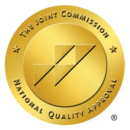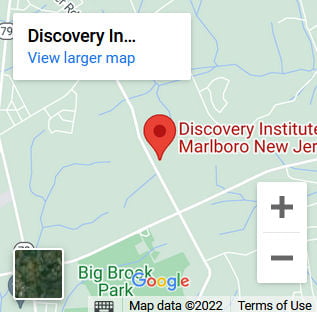Eating Disorders and Substance Abuse
People with eating disorders tend to be stressed and depressed, leading them to turn to drugs and alcohol for relief. Eating disorders and substance abuse occurring together are not unusual.
About 20 million women and 10 million men have had an eating disorder at some point in their lives. Celebrities like Lady Gaga, Russell Brand, Alanis Morissette and Elton John all suffered from different eating disorders and have successfully recovered from them. If you have an eating disorder, you might feel ashamed to talk about it or admit that you have one. If they go on for too long, eating disorders can severely damage your body. When combined with substance use, the damage on your body can be even more serious.
Discovery Institute can help treat your eating disorders and substance abuse. We’ll break down eating disorders and how they can be made even worse with a co-occurring disorder.
What is an Eating Disorder?
An eating disorder is a serious condition involving unhealthy eating patterns and behaviors that negatively affect your life, both mentally and physically. People with eating disorders constantly worry about food, body shape, and weight. Although many eating disorders begin in young adulhood, they can affect people of all ages and genders.
Eating disorders affect your digestive system, bones, teeth, and mouth, and they can lead to other serious health complications.
Signs and Symptoms of Eating Disorders
Even though eating disorders each have their own specific sets of symptoms, there are general warning signs that can predict a problem. Someone with an eating disorder may not have all these signs and symptoms at once, and they also might not experience all of them.
Emotional and behavioral symptoms of eating disorders include:
- Preoccupation with weight
- Extreme mood swings
- Not comfortable eating around others
- Withdrawal from friends and activities you used to enjoy
- Food rituals, such as eating particular foods and not allowing food to touch
- Frequent checking in the mirror for flaws in appearance
Physical symptoms of eating disorders include:
- Noticeable fluctuations in weight
- Difficulty concentrating
- Missing periods (for females)
- Dizziness
- Fainting
- Stomach cramps
- Acid reflux
- Muscle weakness
Types of Eating Disorders
Eating disorders come in several different forms, and symptoms vary on the type of eating disorder you have. Here are four common ones.
Anorexia
Anorexia nervosa, commonly known as anorexia, is an eating disorder in which people view themselves as overweight when in reality, they are dangerously thin. It tends to affect more women than men.
People diagnosed with anorexia usually have the following characteristics:
- Distorted body image
- Intense fear of becoming fat or gaining weight
- Obsessive desire to lose weight
- Abnormally low body weight
- Extremely restrictive eating patterns
It isn’t always easy to tell if someone is anorexic by looking at them; they do not need to be underweight to have the disorder. People with anorexia often find it difficult to eat in public and feel a need to control their environment. They also restrict how much they eat or “binge” (eat a large amount of food in a short time) and “purge” (through vomiting or laxatives). Anorexic people may also have obsessive-compulsive symptoms, which include constantly thinking about food, hoarding food and collecting recipes.
When you starve yourself, your body isn’t getting the essential nutrients it needs to function normally. As a result, your body is forced to slow down its processes to save energy. Anorexia can lead to numerous health problems like infertility, bone thinning, brittle nails, and even death.
Bulimia
Bulimia nervosa, commonly known as bulimia, is an eating disorder that consists of episodes of bingeing and purging, which involves force vomiting, excessive exercising or using laxatives to get rid of the food. Bulimia is also more common in women than in men. People with bulimia will become uncomfortably full after each time they’ve eaten, and binge episodes usually consist of foods that they normally avoid. As a result, they try to “purge” themselves of the bad food they’ve eaten to feel better about themselves.
You may have bulimia if you experience the following:
- Recurring episodes of binge eating, which involves eating a large amount of food in a set period with little control
- Recurring episodes of purging, which involves forced vomiting, excessive exercise or the use of laxatives/diuretics
- Fear of gaining weight, even if you are at a normal weight
- Self-worth overly determined by weight
Force-vomiting can inflict damage on your body. It can cause you to have a sore and inflamed throat and worn tooth enamel.
Binge-eating
Binge-eating disorder sounds like bulimia, but it is different in that there is no purging involved.
Pica
People who have pica generally eat things that are not food, such as soil, soap, dirt, chalk, ice, cornstarch or hair. They still ingest regular food, but they have been known to eat these kinds of objects for at least one month.
The TLC TV shows “My Strange Addiction” and “Freaky Eaters” have showcased pica. People on this show have eaten everything from corn starch to toilet paper.
How Do Eating Disorders Develop?
Even though the exact cause of eating disorders is unknown, they are usually caused by psychological trauma or genetics. Many people with eating disorders have low self-esteem.
Below are a few risk factors for eating disorders.
- Having a family member with an eating disorder. You have a higher chance of developing an eating disorder if one of your family members has one.
- Having a history of dieting. People who diet frequently tend to binge-eat.
- Being disappointed in your body image. It’s not uncommon to begin disliking your body, especially as you get older. People with eating disorders tend to have more distorted body images than others.
- Having been teased or bullied. Bullying has become more common in recent years, especially online. 60 percent of people who have eating disorders say being bullied resulted in the development of their eating disorder.
- Weight stigma. We live in a society where skinny models are featured on social media and in magazines. People who want to look like these models have a high chance of developing an eating disorder.
CONTACT US
Find out how we can help
Our compassionate counselors are standing by to answer any questions you may have. After helping thousands of people over the last 50 years, we have the resources to help you and your family and all your individual needs.
What is A Substance Use Disorder?
Substance use disorder refers to the use of drugs or alcohol in amounts that end up harming your body. This can happen through large amounts of substances or through the types of drugs you take. Alcohol use disorder, opioid use disorder, and Xanax use disorder are all examples of substance use disorder. People use substances to feel better about their problems or find an escape from daily life.
Those who are dependent on drugs and alcohol are different from those suffering from addiction. Dependant individuals still have the ability to change their behavior. However, if it is serious, substance use must be treated at a substance treatment facility.
How Substance Abuse Impact Eating Disorders
People with eating disorders tend to be stressed and depressed, leading them to turn to drugs and alcohol for relief. Eating disorders and substance use disorders occurring together are not unusual. About 50 percent of people with eating disorders have also misused drugs and alcohol. Vice versa, about 35 percent of people who misuse substances also have an eating disorder.
Substances most commonly used by people with eating disorders are amphetamines, alcohol, cocaine, heroin, laxatives, emetics, and diuretics. The last three caused bodily fluids or food to escape our bodies quickly, making them attractive to those with eating disorders.
Having both eating disorders and substance abuse puts people at risk of developing many health complications. Early intervention is crucial to prevent both substance use disorder and an eating disorder from getting worse. They must also be treated simultaneously.
Eating disorders and substance use disorders have a few risk factors in common:
- Social pressures
- Anxiety
- Brain chemistry
- Low self-esteem
- Depression
Seeking Help for Co-Occurring Disorders at Discovery Institute
To effectively treat co-occurring eating disorders and substance use disorder, they must be treated simultaneously. If you have both of these, you may feel unsure of where to turn and how to get help. In these cases, it is important to find a facility that will offer the best care for your conditions.
Discovery Institute provides quality dual diagnosis treatment to patients experiencing co-occurring disorders. Our staff is fully equipped with the tools and skills to put you on the road to recovery.
Eating Disorder Treatment
When you recover from an eating disorder, you’re not trying to flush drugs out of your system. You don’t need a detox in this situation. However, you will likely need a nutritionist or registered dietitian and a psychologist who can help you understand how your eating disorder developed. Your body has likely undergone some unhealthy changes that will need to be addressed by a medical professional.
If you have severe health problems, you may have to be taken to a hospital. Your clinician will work out an eating disorder treatment plan that will meet your needs.
Substance Use Disorder Treatment
Recovering from substance use disorder will require you to receive a detox to flush harmful substances out of your system. This will usually take about 30 days and will be under the supervision of our licensed treatment staff. After this is complete, aftercare will begin. This usually involves individual or group therapy.
The following types of therapy will be helpful for both eating disorders and substance use disorder:
- Cognitive behavioral therapy (CBT): CBT can help you learn healthier eating habits by focusing on your thoughts and behaviors. Distorted, unhealthy thoughts have likely led
- Family therapy: Family therapy can help rebuild bonds that may have been strained while you’ve had co-occurring disorders.
- Group therapy: Group therapy will let you discuss your thoughts and feelings with other people who have struggled with eating disorders and substance use disorder.
Get Dual Diagnosis Treatment at Discovery Institute
Eating disorders and substance use disorder can be difficult to conquer, but at Discovery Institute, we can help you do it. Contact our staff today, and we can help you take control of your life once again.



